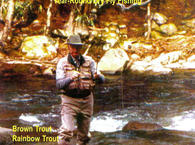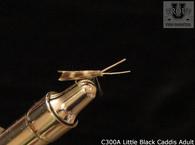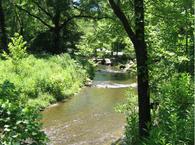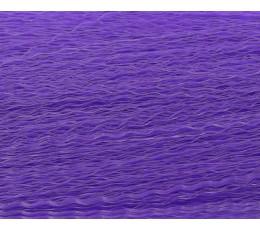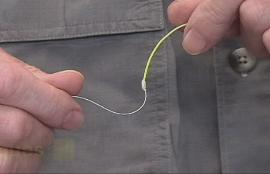
This course will familiarize the student with the basic knots used in trout fishing. After the completion of this course, the student should know how to recognize the need for various knots; and have the ability to tie them. The importance of knots can not be over stressed and Class 203 will instruct the reader in assembling the entire fly line set up.
Tying basic knots: A handful of knots are useful in various situations when fishing.
The Trilene knot is one of the most useful knots, as it features one of the highest breaking strengths for tying your leader or line to the hook, making it the recommended knot for this application.
Clinch knot: The clinch knot is a very basic knot used to tie hooks, lures, and tackle to the line. It has decent strength, is easy to tie, and is a good choice for the beginner if you can't master the Trilene knot or improved clinch knot. Additionally, the clinch knot and the improved clinch knot can be used in places the Trilene knot cannot, such as the eye of an overdressed fly, where there is not enough room for a second loop of fishing line through the hook's eye.
Improved clinch knot: The improved clinch knot is similar, though a little more complicated, than the clinch knot. Also, it is somewhat stronger than the clinch knot, though not as strong as the Trilene knot.
Arbor knot: The arbor knot is used to tie fishing line or backing to the reel's arbor, prior to spooling the reel.
The Albright knot is used to connect the fly line to the backing.
Blood knot: The blood knot can be used to join, end to end, two pieces of similarly-sized line. It would be used, for example, for tying tippet on the end of a leader when fly fishing. Additionally, we use it when a section of line in the middle of our spool (when spinfishing) needs to be cut out, and the line joined back together.
Nail knot: The nail knot is used to join two dissimilar-sized lines. It is primarily used to attach the leader to the fly line when fly fishing, or to join two significantly mismatched segements of the leader together.
Perfection loop: The perfection loop is often used to terminate the fly line to facilitate attachment of the leader, in lieu of using a nail not. The perfection loop, for example, would allow an entire leader to be changed out easily, without cutting any line. Additionally, the perfection loop is used to tie a lure on the end of the line, to allow the lure to move freely.
Duncan loop: The Duncan loop can be used for attaching the leader or fishing line to the hook.
Check the rite bite tippet knot
Practice this basic knots
Further study on knots and include some applications from Killroy's.
After some practice the student should take Class 203 to learn how to complete the fly set up.
Recommended Instructional DVD:
Knots and Rigging Techniques by James Marsh.
Getting Started Fly Fishing Basics by James Marsh


